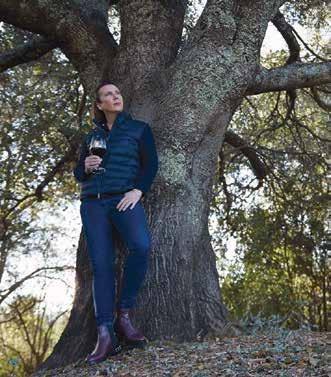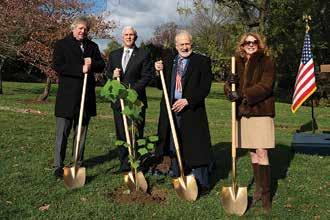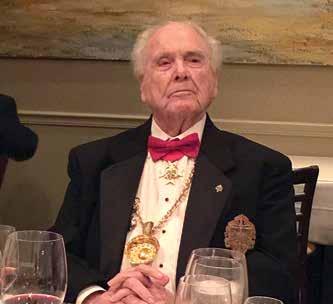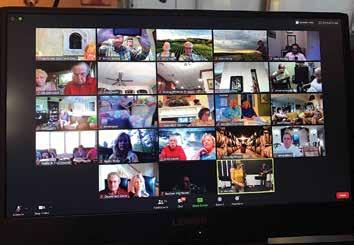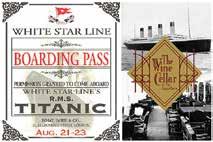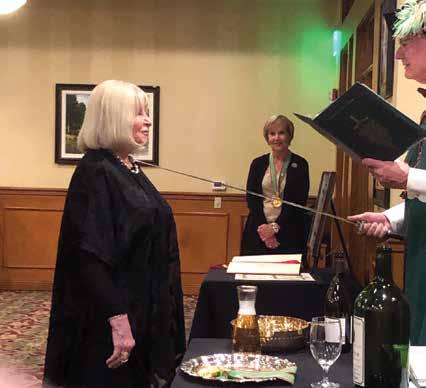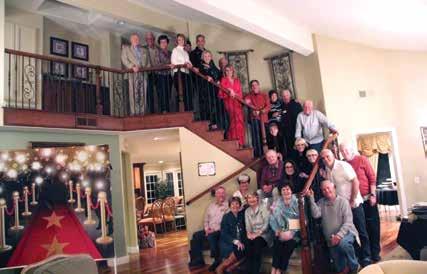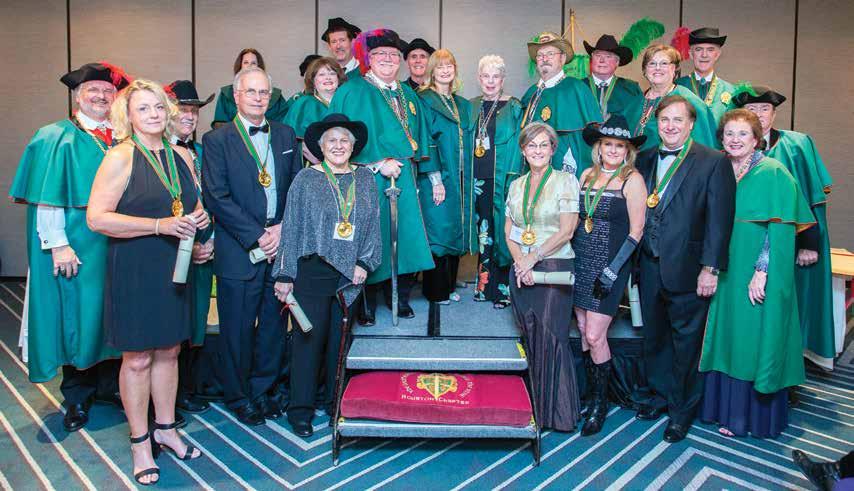
14 minute read
Gina Gallo: Supreme Lady
Gina Gallo
Gina Gallo, Supreme Lady of the Brotherhood of the Knights of the Vine, is not just known for her iconic name in the California wine world, but as a prominent winemaker who is carrying on the pioneering tradition of her legendary grandfather, Julio Gallo who, with his brother Ernest, founded E & J Gallo Winery in 1933. Since padding around the Gallo vineyards in Modesto as a toddler, Gina has learned the business, literally from the ground up, and is following in the Gallo founders’ footsteps by blazing new winemaking trails in California and throughout the world. Her story is as inspiring as her accomplishments.
Gina began her professional career by studying business psychology at Notre Dame de Namur University. She then joined the Gallo sales organization to learn all aspects of the family business. To expand her technical knowledge, she enrolled in the University of California, Davis, winemaking program, where she studied viticulture and enology. This is where she discovered her true calling — winemaking. She was mentored by her grandfather and winemaking veteran Marcello Monticello, one of the most respected of the Gallo winemakers and trusted friend of the family, where she honed her craft as an artisanal wine maker. After two decades in the cellar, she established the Gallo Signature Series, a personal collection of premium wines that “brings to life the enduring legacy of Ernest and Julio Gallo and celebrates our family’s vision for the future.”
Today, Gina lives in Healdsburg, where she is Vice President of Estate Winemaking and winemaker for the Gallo Signature Series. For these wines, Gina selects “the best of the best” from their vineyards in the Santa Lucia Highlands, Napa Valley and throughout Sonoma County. Gina’s brother, Matt, is intricately involved in the Signature Series wines as Vice President of Coastal Operations including wineries and vineyards in California’s north and central coast.
Gina has been actively involved in the business and wine community, and has been honored with many accolades and awards, receiving the American Wine Society Award of Merit, and being named one of the Most Innovative Women in Food and Drink by Fortune magazine, and listed as #17 on Decanter magazine’s “Power List” of the most important men and women in wine. She is past president of the International Wine & Spirit competition and was inducted into the 2016 James Beard Foundation Who’s Who of Food and Beverage in America. In 2019, she co-chaired the Sonoma Wine Auction along with Chris Jackson of Jackson Family Wines, representing two of the most influential, long-term Sonoma wine families.
Gina is married to KOV Supreme Knight JeanCharles Boisset, French vintner, and the proprietor of the Boisset Collection. Under Boisset’s leadership, the Boisset Collection operates 28 wineries in California, France and Canada. The couple have twin girls, born in 2011.
Gina recently took time from her busy schedule to have a Zoom conference with Arbor Magazine, where she discussed her family history, her life as a winemaker and her involvement in KOV.
By Nan McCreary
continued >>>
Supreme
Lady
The Arbor (TA): What are your earliest memories of growing up in a “wine family”?
Gina Gallo (GG): Being in the dirt. And being out in the garden with my father and my grandfather (Julio Gallo) and pruning different fruit trees. Our farm wasn’t always just vineyards. We had fruit trees and we had animals—goats and chickens — and I remember collecting eggs. Managing the garden taught me to understand seasonality, like the beautiful vegetables we’re enjoying right now. The greatest memories of my family were the times we had at the table. We had a big family — I have seven siblings — and we’d all pitch in to help. We’d set the table, help prepare the food and wash the dishes. It was all very warm and inviting. On Sundays both sets of my grandparents would come for supper and I’d listen to the lively discussions around the table. I’d hear my grandfather speak of different things about the winery, but wine wasn’t the most important thing. It was just part of the meal. Actually, food was more important than the wine. But what was most important was the people around the table. This is what I remember the most.
TA: Did you decide on your own to go into the business, or was it something that was expected of you?
GG: I definitely wasn’t encouraged by my family. But I was encouraged by seeing my grandfather and my dad talk — back to the table again — and I realized that what they were building and believing in was for the next generation and I wanted to be a part of it. That’s what really attracted me. And I saw that my father and my mother loved what they were doing. My father loved the land, the dirt and sustainability; my mother loved the arts and started a performing arts center in
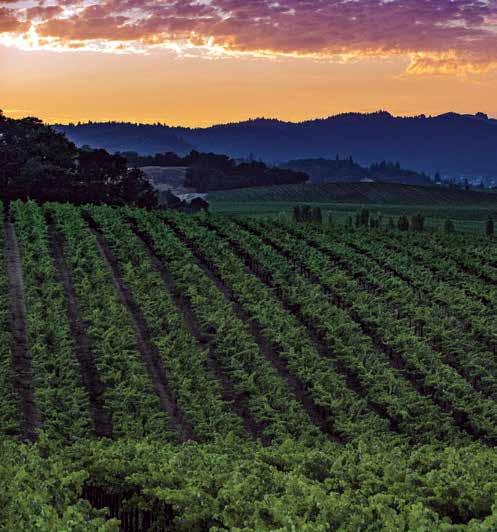
Modesto. One day my father said to me, “You have to follow your passion.” So, at a very young age I started searching for my passion. When I first went to college, I studied psychology because I loved it. But then I decided psychology wasn’t for me and I’m glad I did, because I finally discovered that my passion was winemaking.
TA: What guidance did you receive from your grandfather, Julio?
GG: He taught me to appreciate detail. “When you plant that root in the ground,” he said, “you make sure it’s properly planted, and you take care of it intensely.” And at a young age, I remember him saying, “The beauty of the vineyard, the great wines of the vineyard, are only as good as the footprint of the winemaker in that vineyard.” He was passionate about the soil — he
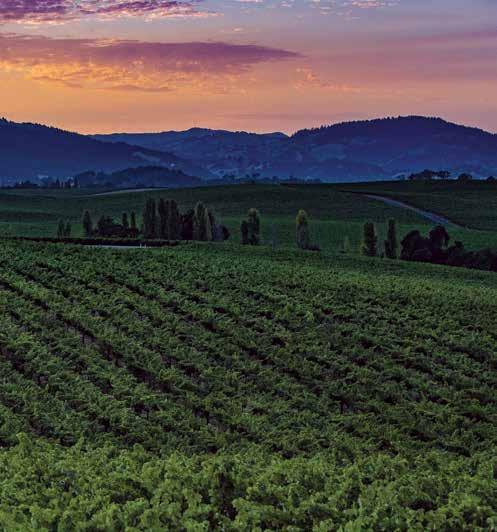
called it “our richest good.” As a family, we’ve come a long way in dialing that in and farming sustainably. Another thing: one day a rather pompous man was in the winery and after he left my grandfather took my arm and said, “Gina, whenever you stop asking questions and you think you know it all, hand over the baton.” Looking at it now, I completely agree. You always have to ask questions and you always have to be inquisitive. I’m a listener, which I love.
TA: You were fortunate to have grown up with such wonderful mentors.
GG: I was. Grandpa was in the dirt: He loved to talk to the growers all over Napa, the Central Coast and Sonoma. Every year right before harvest he’d have a lunch and ask everyone to bring their tomatoes for a tomato tasting. He’d say, “If it’s a good tomato year, it’s going to be a great grape harvest.” He was always looking at who had the best tomatoes, because that person would be the best grape grower. His garden meant everything to him.
Ernest was the salesman. He studied the market and had the discipline to teach the salespeople how to sell. He helped create the 10 steps to a sales call. He instructed his sales people to never park in front of a store because that’s for the customers; survey the store before you talk to the buyer; take your duster and dust your products on the shelves. Wear a jacket and tie…things like that. People want structure, and he built an amazing sales organization.
TA: You’ve immersed yourself in all facets of the wine business, literally from the ground up. Why did you decide you wanted to become a winemaker?
GG: I started out in sales because I knew I wanted to come back to the family winery, and the best way to learn the business is in sales. You not only learn your own wines, but you learn your competitors’ wines and you establish relationships with restaurants and retailers. I loved building those relationships. At some point, I became curious about winemaking, and asked my dad if I could take extension courses at U.C. Davis. That’s where my passion really hit. I remember taking a sensory course, which was entirely new for me, because growing up, we were not swirling or smelling; wine was just part of dinner. I found the sensory experience fascinating. I learned about all these amazing smells and flavors — blueberries, blackberries, cassis — and they were coming from a grape! Next, I took a class on the science of wine, which I found fascinating too because I’m not really strong on the technical side, even though I do love to cook. After this, I went home and told my
continued >>>
dad, “I love this. I love wine.” He said, “Go down that lane and talk to your grandfather.” So, I walked down that lane — I was really nervous — and I talked to Grampa. “I have a place for you,” he said, and he put me in what we called the experimental area in Modesto and I loved it. I knew the vineyard, but I knew nothing about winemaking. Not a clue. Here, we were harvesting grapes from the Central Coast, Napa, Sonoma and Modesto in one case lots with a half-ton fermenter and experimenting with yeasts, various trellis systems and grape varieties from different areas and learning about the land and the region. It was a great place to start because I love to do a little bit of this and that in the kitchen, but this involved discipline and a focus on science rather that creativity and the arts that I enjoy. It was enlightening and gave me a solid background which helps me today.
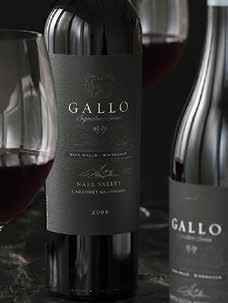
TA: When did you leave the experimental program?
GG: In the Gallo Cellar, I was mentored by Marcello Monticello, my grandfather’s right-hand man. One day he came to me and said, “We’re going to do some estate wines in Sonoma, and we need your help. You can do it.” I had been in the lab for two years and I didn’t want to leave. “It’s time to fly,” he said. He kept pushing me and, finally, I agreed to go. “Okay, I’ll do it for you,” I said. We worked together in Sonoma for five years, driving to and from Modesto every day. He just retired, after 50 years with Gallo.
TA: What did you discover about wine during this journey?
GG: I had a Calera (Mt. Harlan) Pinot Noir in the 1990s and I fell in love with the grape. My grandfather never liked Pinot Noir; he thought it was vinegary, light and wimpy. But in the 40s, 50s and 60s we didn’t have the right clone. If you have the right clone, you can make Pinot Noir as good as they make in Burgundy. When I tasted Pinot from Burgundy, I thought, “Wow, we should be able to do this.” And when I tasted Pinot from Calera, I said, “I know we can do this.” So, I really went to the dirt and started studying to find areas where we could grow Pinot. Today, we have a Two Rock Vineyard in Sonoma that does amazing things with Pinot. We also produce Pinot — and Chardonnay— at our Laguna Ranch Vineyard, in Sonoma’s Russian River Valley. My grandfather and uncle purchased that land in 1976. At the time it had apples growing on it and my grandfather would take the apples home to my grandmother and she’d make apple pie. He thought it was great, and said, “One day this land is going to be great for Chardonnay.” I love this: history can challenge and enlighten us. We learn from history to move forward.
TA: In 2011, you launched the Gallo Signature Series, based in Sonoma County. What inspired you to do this?
GG: I wanted to do this for my grandfather Julio and my great uncle Ernest. It was about our family heritage; the family heritage that gave us the foundation for what we’re doing today. People like and respect Gallo wines, but there’s always something else to buy. With the Signature Series, we can have our family name on wines that are competing with the best of the best. For me, it was about venturing out. We have all these beautiful, sustainably-farmed estate vineyards (in the Santa Lucia Highlands, Napa Valley and Sonoma) and I wanted to put the family name on these wines. From these vineyards, I get to choose the best Cabernet, the best Pinot Noir, the best Chardonnay and the best Zinfandel. We don’t make a lot of it, but it gives us an opportunity to put our premium wines in the market for people to taste and experience. I think the name Gallo on the label says “pioneers and entrepreneurs.” We believe we’re here for generations, that there will always be a winemaker in our family. What I like about the Signature Series is that it’s keeping the Gallo name alive. It’s a classic name that can withstand the times. Everyone loves a piece of history.
TA: What is your winemaking philosophy?
GG: It goes back to the table. If you have a good piece of meat, you’re not going to mess with it. So, for me, my philosophy is to always go to the dirt. You need to make sure that the Pinot Noir is matched to the right clone; that the Cabernet is on the right soil and on the right side of the slope. You have to do your homework. I learn a lot from history, and I learn a lot from Europe and what they’ve done in the past. Our land is different, but if you get the ground right, the vine right and if you’ve done your homework, you can sail through harvest. Of course, it’s not as easy as it sounds. There is a lot of trial and error, but when it all comes together it’s so much fun. In the winery, I’m very minimalistic. I don’t like to do a lot to the wine. But sometimes I like to push the envelope if I have the right thing going on in the winery. For example, a lot of winemakers don’t like to do extended maceration. I’m a believer in it. The fruit needs to stay on the skin for at least 25 days to properly evolve and bring out all the beautiful characteristics. Once the wine goes to barrel, there’s not much you can do. It’s kind of like raising a child: by the time a wine goes to barrel, I want it to be beyond a teenager.
TA: As you look to the future, what are your goals?
GG: My ambition is to definitely promote the Signature Series to preserve our heritage. Also, we are big believers in sustainability, and work closely with the California Wine Institute to help wineries farm sustainably. I try to support growers and vintners, as they have supported me. It’s not like in the olden days when the industry was very competitive. Today, the more people learn about wine, the more they share. We collaborate and communicate, like we do with smoke taint. The more we collaborate, the better off we will be in the wine world. E. & J. Gallo is also active in programs to help feed the hungry. Being part of that has made me realize that when I step up and partner with these organizations, I gain much more than I give. It’s amazing. TA: We’re honored to have you and Jean-Charles as Supreme Lady and Supreme Knight of the San Francisco Bay Area Chapter of KOV. How do you view your relationship with KOV?
GG: I would start by saying we’re honored to be part of KOV. What I love and what I am endeared to is how strong you are, how you network and bring people together to learn in a beautiful fashion and to socialize in a beautiful fashion. We had that beautiful KOV event at Buena Vista Winery in 2016, and it was all about coming to the table again. It was about the food, the wine and the sharing. Yes, KOV is about the food and the wine, but more importantly it’s about camaraderie, people learning from each other and growing with each other and leaning on each other. It’s very powerful. And the bonus is that you have some amazing wine and you learn something about wine. But the huge bonus is the relationships that you make.
TA: We’re really pleased that you’ve spent so much time with us when you have such a busy schedule. Thank you so much.
GG: Thank you. I’ve enjoyed it.
